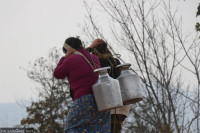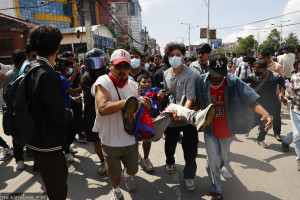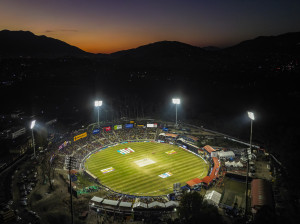Editorial
Humla forgotten
Last month, 10 people died—two of them being children—and a further 300 were affected with flu-like symptoms in the district of Humla. The affected were also suffering from chronic obstructive pulmonary disease, and some were malnourished as well.
Last month, 10 people died—two of them being children—and a further 300 were affected with flu-like symptoms in the district of Humla. The affected were also suffering from chronic obstructive pulmonary disease, and some were malnourished as well. The government eventually sent four doctors to help contain the situation, and they were shocked seeing the living conditions of the locals. Food insecurity is rampant, health posts are few in number and lack basic healthcare and diagnostic facilities, and transport linkages are insufficient. In Nepal’s drive for development and prosperity, it seems that Humla has been completely left behind.
The 2011 census recorded that the population of Humla is just over 50,000 arranged in 9,479 households. Less than a third of these households are connected through phones, be it mobile or landline, and less than half have access to the radio—internet or television connectivity not even reaching a tenth. The lack of connectivity is just the tip of the iceberg, however. The Nepal Human Development Report 2014, jointly published by the National Planning Commission and the UN Development Programme, state that the Human Development Index values for the mountainous Far-West are among the lowest in the country, with the Humla district itself having one of the lowest HDI values in the entire country. It has the lowest numbers in education, and among the lowest numbers in life expectancy. The district also has the highest levels of child malnourishment, with over 60 percent of children being malnourished.
Humla also remains the only district yet to be connected to the national road network. The Simikot airport is the only connection this district has with the rest of Nepal. Such issues combined have taken a huge toll on Humla’s development prospects. The recent flu outbreak has highlighted Humla’s plight. Dr KN Poudel, one of the four doctors sent to Humla to deal with the outbreak, opined that even with the malnourishment and high occurrence of progressive lung diseases among those affected, the children and middle-aged would not have died had they been in Kathmandu or other places in Nepal. Some health posts do not have doctors, and it takes patients three days from most rural municipalities to reach the district hospital in Simikot.
When Nepal embraced federalism, it was believed that the promise of regional self-governance would benefit local communities. While we hope this will be successful, Humla has obviously seen little change. As the state talks of achieving double digit growth and enhancing connectivity with our neighbours, people in this district barely have enough food to fulfil nutrition requirements and don't have proper access to sanitation, healthcare or education. In light of the slow implementation of effective federalism, there has to be more coordination between the centre, the province and the local-level government. In this recent health disaster, the director of the Epidemiology and Disease Control Division said that local healthcare bodies have stopped sending regular information to federal agencies. This is a mistake. In between the promotion of local self-governance and the national ambition of economic development, places like Humla cannot be forgotten.




 7.12°C Kathmandu
7.12°C Kathmandu














